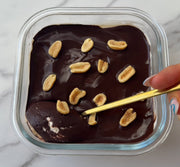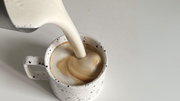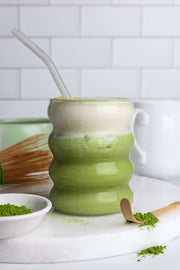
Exercise Recovery Tools: What’s Actually Essential, and What’s Overhyped?
Foam rollers, massage guns, compression boots - if you’ve spent any time consuming fitness content lately, you’ve probably seen all kinds of recovery tools being recommended. But do we really need all this gear to recover properly after a workout, or are the basics just as beneficial? In this post, we’re breaking down what’s genuinely helpful for recovery and what might be more hype than help - so you can save your muscles (and your money)!
We all know that recovery is just as important as the workout itself - it’s when our muscles rebuild and grow stronger and when it comes to recovery tools, not all are created equal. To make sense of what’s actually worth your time and money, we can break them down into three categories:
- Essential - these are the must-haves. They might not be flashy or exciting, but they play a crucial role in helping your body repair and recover properly after exercise.
- Effective - these tools can definitely support your recovery and improve how you feel after training, but they’re not vital. Consider them helpful additions.
- Overhyped - these might look cool and feel nice, but they’re not essential (and they often come with a hefty price tag).

Essential Recovery Tools: The Basics That Actually Work
Essential recovery tools are the tried-and-true things we know we should be doing - but let’s be real, they’re not always the most exciting. Still, these basics lay the foundation for effective recovery and long-term progress. We’re talking about rest, nutrition, and hydration.
Rest
Sleep is one of the most powerful (and free!) recovery tools out there. During deep sleep, your body releases growth hormone - key for repairing and rebuilding muscle tissue after a workout. It also gives your body the downtime it needs to heal muscle damage, reduce inflammation, and prep for the next session. Ideally, aim for 7-9 hours of high quality, uninterrupted sleep each night. Can’t swing that every night (hello, parenthood)? Even short bouts of rest in a cool, dark, quiet space can still support recovery and reduce fatigue. Active recovery - like walking, stretching, or gentle yoga - is also important to help improve circulation and reduce soreness.

Nutrition
Recovery doesn’t happen without the right fuel. Protein is essential - it breaks down into amino acids, which your body uses to repair damaged muscle fibres and kick-start the muscle building process. Aim for 1.2-1.6 grams of protein per kilogram of body weight daily, and try to get around 20g of protein post-workout to maximise recovery (a THRIVE Plant Protein smoothie, anyone?!) And let’s not forget carbs! They help replenish glycogen stores that get depleted during exercise - essential if you’re training regularly. Plus, who really needs an excuse to enjoy more carbs?
Hydration
Water plays a key role in regulating body temperature, transporting nutrients, and flushing out waste products that build up during exercise. Replenishing fluids lost through sweat helps restore energy, support muscle function and prevent fatigue. Try to sip water consistently throughout the day, not just during or after your workout. As a general rule, your urine should be pale yellow. If you’ve had a particularly sweaty session or trained in the heat, consider adding electrolytes to help replenish what you’ve lost.
Effective Recovery Tools: Helpful (But Not Crucial)
These tools aren’t essential, but they can definitely boost your recovery - especially if you want to feel your best between workouts. Think of them as strong support players: not mandatory, but definitely worth including. We’re talking about things like magnesium, foam rolling and nervous system regulation.
Magnesium
Magnesium plays a key role in exercise recovery by supporting muscle protein synthesis, easing muscle soreness, and promoting overall relaxation. It also helps break down and clear lactic acid - a byproduct of exercise that can leave you feeling stiff and achy. You can boost your magnesium levels through your diet (hello, Moon Mylk!), with supplements, or topically via a relaxing Epsom salt bath.

Foam Rolling
Foam rolling is a great recovery tool that helps reduce muscle soreness, improve circulation, and ease inflammation after a workout. By applying pressure to tight or tender areas, foam rolling helps break up adhesions in the fascia (the connective tissue around your muscles), allowing for faster recovery. It also boosts blood flow, which means more oxygen and nutrients delivered to your muscles. Foam rolling is easy to add to your routine, whether it’s post-workout or on rest days, just 1-2 minutes on each muscle group can make a big difference!
Nervous System Regulation
Your nervous system plays a major role in how well you recover from exercise - and it’s not just about muscles and movement. After a workout, it’s important for your parasympathetic nervous system (also known as “rest and digest”) to take the lead. This is the state where your body can truly repair, restore balance, and recover effectively. To help shift your body into this recovery mode, techniques like breathwork, mindfulness, and meditation can work wonders.

Overhyped Recovery Tools - cool, pricey, and kind of extra
Saunas, cold plunges, and compression boots have become wildly popular in the recovery world, but the truth is.. they’re not required for effective recovery! These may feel great and offer short-term benefits like reduced soreness or a temporary boost in circulation, but they aren’t necessary for your body to rebuild after exercise. If you enjoy using these tools and they fit your lifestyle and budget, great - but don’t feel like you need to suffer through an ice bath to recover well!
At the end of the day, the basics still win when it comes to exercise recovery. Prioritising quality sleep, proper nutrition, hydration, and rest will always have the biggest impact - no fancy tools required. While extras like cold plunges or massage guns can be nice additions, they’re just that: extras. Focus on consistency with the fundamentals, and your body will thank you!
Want to try any of the products mentioned in this blog? Use my code GEORGIEG for 15% off Nu Harvest supplements & accessories. Enjoy!

By Georgie Grigg
Georgie Grigg is an Accredited Exercise Physiologist with a special interest in holistic health. She works primarily in occupational health and with private clients to help them achieve their health and wellness goals.
![[Nav_Category_shop-all.jpg] SHOP ALL](http://www.nakedharvestsupplements.com/cdn/shop/files/Nav_Category_shop-all_medium.jpg?v=229551162107522660)
![[Nav_Category_protein.jpg] PLANT PROTEIN](http://www.nakedharvestsupplements.com/cdn/shop/files/Nav_Category_protein_medium.jpg?v=3001415470058422894)
![[Nav_Category_pre.jpg] NATURAL PRE-WORKOUT](http://www.nakedharvestsupplements.com/cdn/shop/files/Nav_Category_pre_medium.jpg?v=6814586239177681891)
![[Nav_Category_electrolytes_v2.jpg] ELECTROLYTES](http://www.nakedharvestsupplements.com/cdn/shop/files/Nav_Category_electrolytes_v2_medium.jpg?v=8085001776675848411)
![[Nav_Category_moonmylk.jpg] BEDTIME HOT CHOCOLATE](http://www.nakedharvestsupplements.com/cdn/shop/files/Nav_Category_moonmylk_medium.jpg?v=12631405938823957710)
![[Nav_Category_Creatine.jpg] CREATINE](http://www.nakedharvestsupplements.com/cdn/shop/files/Nav_Category_Creatine_medium.jpg?v=5379326253006347654)
![[Nav_Category_Matcha.jpg] MATCHA & CHAI](http://www.nakedharvestsupplements.com/cdn/shop/files/Nav_Category_Matcha_medium.jpg?v=12528052245834137118)
![[Nav_Category_wellness.jpg] GORGEOUS GREENS](http://www.nakedharvestsupplements.com/cdn/shop/files/Nav_Category_wellness_medium.jpg?v=12528176088121862281)
![[Collagen_category.jpg] COLLAGEN](http://www.nakedharvestsupplements.com/cdn/shop/files/Collagen_category_medium.jpg?v=7874986955741861029)
![[Nav_Category_onthego.jpg] ON-THE-GO](http://www.nakedharvestsupplements.com/cdn/shop/files/Nav_Category_onthego_medium.jpg?v=9258968730903582129)
![[Nav_Category_accessories.jpg] ACCESSORIES](http://www.nakedharvestsupplements.com/cdn/shop/files/Nav_Category_accessories_medium.jpg?v=8748347510610747858)
![[Nav_Category_samples.jpg] SAMPLES](http://www.nakedharvestsupplements.com/cdn/shop/files/Nav_Category_samples_medium.jpg?v=12269696752583776743)
![[Nav_Category_giftcard.jpg] GIFT CARDS](http://www.nakedharvestsupplements.com/cdn/shop/files/Nav_Category_giftcard_medium.jpg?v=1625935370118938582)
![[Nav_Category_pilates.jpg] Yoga/Pilates](http://www.nakedharvestsupplements.com/cdn/shop/files/Nav_Category_pilates_medium.jpg?v=13143021470193189408)
![[Nav_Category_high-intensity.jpg] High Intensity](http://www.nakedharvestsupplements.com/cdn/shop/files/Nav_Category_high-intensity_medium.jpg?v=1128519081117118136)
![[Nav_Category_low-intensity.jpg] Lifestyle](http://www.nakedharvestsupplements.com/cdn/shop/files/Nav_Category_low-intensity_medium.jpg?v=9882188842252146182)
![[Nav_Category_strength.jpg] Strength Training](http://www.nakedharvestsupplements.com/cdn/shop/files/Nav_Category_strength_medium.jpg?v=12070627897078322724)







